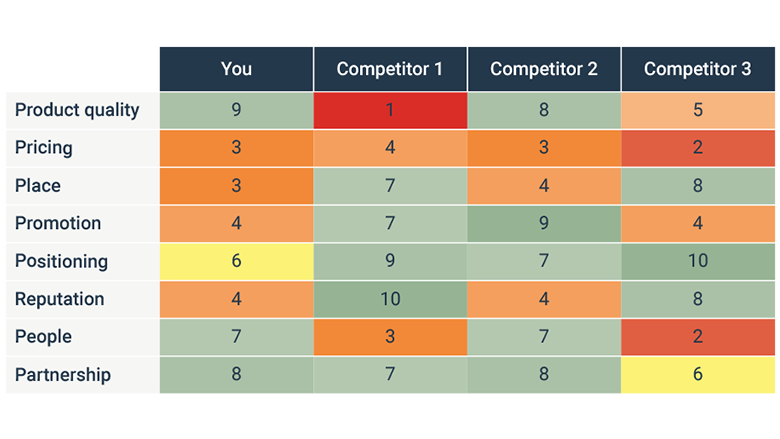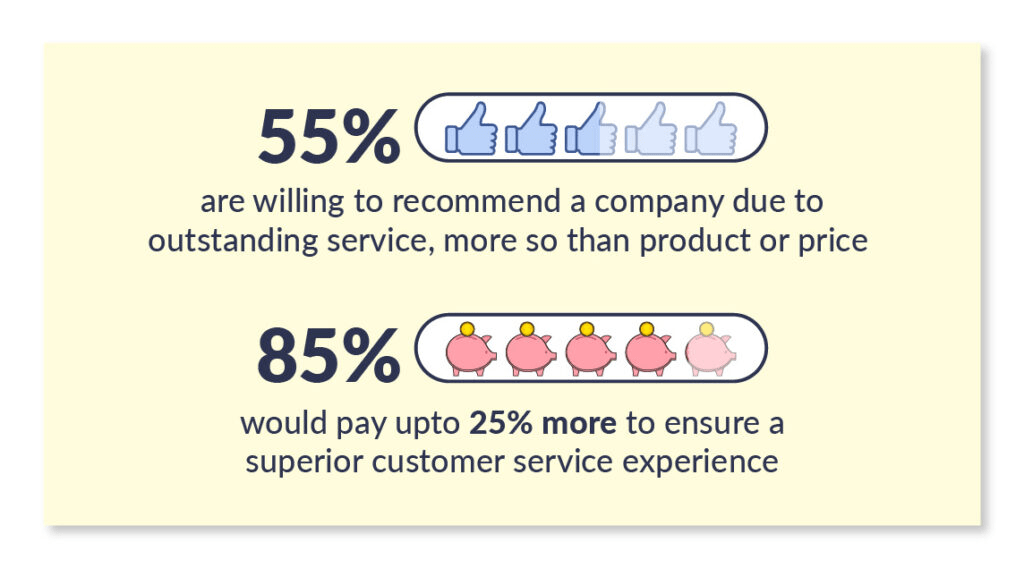A well-structured marketing campaign plan is crucial for businesses, but why? To stand out from the competition and achieve their marketing goals. A marketing campaign plan serves as a roadmap that guides your marketing efforts, ensuring everyone on your team is on the same page and working towards the same objectives.
Without a clear plan, you risk wasting resources, missing opportunities, and failing to reach your target audience effectively. This blog will provide a comprehensive guide to creating a results-driven marketing campaign plan that drives actual results for your business.
Why You Need a Marketing Campaign Plan
There are many reasons why you need a marketing campaign plan. Here are a few of the most important:
- Clarity and Focus: A marketing campaign plan helps you to clarify your marketing goals and objectives. This clarity and focus will help you make better decisions regarding marketing efforts.
- Alignment: A marketing campaign plan helps ensure that all your marketing activities align with your overall goals. This alignment is essential for maximizing the impact of your marketing efforts.
- Efficiency: A marketing campaign plan can help you save time and money by preventing you from wasting resources on marketing activities that are unlikely to be successful.
- Measurement: A marketing campaign plan helps you track the progress of your marketing efforts and measure your results. This data can be used to improve your marketing campaigns over time.
Steps to Creating a Winning Marketing Campaign Plan
Creating a winning marketing campaign plan involves several steps. Here’s a breakdown of the critical steps to follow:
1. Campaign Objectives
The foundation of any successful marketing campaign plan lies in clearly defined objectives. These goals should be SMART:
- Specific
- Measurable
- Achievable
- Relevant
- Time-bound
For instance, instead of a vague goal like “increase brand awareness,” a SMART objective would be to “increase website traffic by 30% within the next quarter through targeted social media advertising.”
Your campaign objectives should align with your overall business goals. They might include:
- Increasing brand awareness could involve metrics like social media followers, mentions, or brand recall in surveys.
- Generating leads: Set specific targets for new leads acquired, focusing on quantity and quality. Boosting sales of a specific product:
- Determine a realistic sales increase percentage or revenue target for a particular offering. Improving customer retention:
- Aim to increase customer lifetime value or reduce churn rate by a certain percentage. When launching a new product or service, Set goals for initial adoption rates, user feedback, or market share acquisition.
2. Target Audience
Understanding your target audience is crucial for crafting a marketing campaign that resonates. This involves creating detailed buyer personas that represent your ideal customers. These personas should be living documents, continuously updated as you gather more data and insights about your audience. Consider factors such as:
- Demographics (age, gender, location, income)
- Psychographics (interests, values, lifestyle)
- Behavioral patterns (purchasing habits, brand preferences)
- Pain points and challenges
- Preferred communication channels
The more precisely you can define your target audience, the more effectively you can tailor your messaging and channel selection to reach them.
- Demographics (age, gender, location, income): Go beyond basic information to understand the nuances of your audience’s life stages and economic situations.
- Psychographics (interests, values, lifestyle): Dive deep into your audience’s motivations, aspirations, and perceptions of themselves and the world around them.
- Behavioral patterns (purchasing habits, brand preferences): Analyze not just what people buy but also why they make those choices and what influences their decision-making process.
3. Competitive Analysis

A thorough understanding of your competitors is essential for differentiating your brand and identifying opportunities in the market. Conduct a competitive analysis to:
- Identify your main competitors: Look beyond direct competitors to include indirect competitors who might solve the same problem differently.
- Analyze their marketing strategies and campaigns: Study their messaging, visual branding, channel usage, and overall marketing approach. Look for patterns and trends in their strategies. Assess their strengths and weaknesses:
- Evaluate their products, customer service, brand reputation, and market position.
- Identify areas where they excel and where they fall short. Identify gaps in the market that your campaign can address: Look for unmet needs or underserved segments that your competitors might be overlooking.
4. Campaign Message and Creative Strategy

Your campaign message should be compelling, clear, and aligned with your brand voice. It should address your audience’s pain points and highlight your product or service’s unique value proposition.
A strong message resonates emotionally with your audience while conveying the practical benefits of your offering. Consider the following when developing your creative strategy:
- Core message and takeaways: Distill your campaign’s essence into a clear, concise message that captures attention and drives action. Ensure that every piece of content reinforces this core message.
- Tone and communication style: Develop a consistent voice that reflects your brand personality and appeals to your target audience. Depending on your brand and campaign goals, this could range from professional and authoritative to friendly and conversational.
- Visual elements (imagery, colors, fonts): Create a cohesive visual identity that supports your message and enhances brand recognition. Consider how these elements will translate across different mediums and platforms.
- Call-to-action (CTA): Craft compelling CTAs that guide your audience toward the desired action, whether purchasing, signing up for a newsletter, or requesting more information.
5. Channel Selection
Choosing the right marketing channels is a critical decision to make or break your campaign. It’s essential to align your channel selection with your target audience’s preferences and behaviors, ensuring your message reaches them where they’re most receptive.
A multi-channel approach often yields the best results, allowing you to create multiple touchpoints and reinforce your message across various platforms.
This strategy recognizes that consumers today interact with brands through numerous channels before making a decision. Consider a mix of:
- Digital channels (social media, email marketing, content marketing, paid advertising)
- Traditional channels (print media, television, radio)
- Direct marketing (direct mail, telemarketing)
- Events and experiential marketing
The key is to select channels that complement each other and create a cohesive user experience throughout the customer journey.
6. Budget Allocation
Determining the overall budget for your campaign and allocating resources effectively across different channels and activities is crucial in ensuring campaign success. Implementing marketing mix modeling can provide data-driven insights to optimize this allocation.
This process requires careful consideration of various factors and should be aligned with your campaign objectives and expected ROI.
Consider the following factors when allocating your budget:
- Cost of content creation
- Advertising spend
- Marketing technology and tools
- Agency or freelancer fees
- Production costs for physical materials
Be prepared to adjust your budget allocation based on performance data as the campaign progresses.
7. Measuring Campaign Success with KPIs
Defining and tracking key performance indicators (KPIs) is essential for evaluating the success of your marketing campaign and making data-driven decisions.
KPIs are quantifiable metrics that align with your campaign objectives and help you measure progress toward your goals.
- Impressions: The number of times your content is displayed or viewed, regardless of clicks
- Organic Traffic: The volume of visitors coming to your website through search engines
- Bounce Rate: The percentage of visitors who leave your website after viewing only one page
- Time on Site: The average time users spend on your website per visit
- Pages per Visit: The average number of pages viewed during a session
Executing Your Marketing Campaign Plan
With your plan in place, it’s time to bring your campaign to life. Here are some critical steps in the execution phase:
- Content Creation: Develop high-quality, engaging content that aligns with your messaging strategy and resonates with your target audience.
- Channel Setup: Prepare your chosen marketing channels, ensuring all technical aspects are in place (e.g., setting up ad accounts and optimizing landing pages).
- Launch: Launch your campaign according to your timeline, ensuring all team members are aligned and ready to support it.
- Monitoring and Optimization: Regularly review your campaign performance against your KPIs. Based on the data you collect, be prepared to make real-time adjustments.
- Engagement and Community Management: Actively engage with your audience across channels, responding promptly to comments, questions, and feedback.
- Reporting and Analysis: Conduct regular reviews of your campaign performance, sharing insights with stakeholders and identifying areas for improvement.
Monitoring and Analyzing Results
As your campaign runs, continuously monitor your KPIs. Use A/B testing to refine your approach and improve results.
After the campaign concludes, analyze the data against your KPIs to identify successes and areas for improvement. Document these insights to inform future campaigns.
Using Analytics Tools
Utilize analytics tools like Google Analytics or SocialBu to track the performance of your campaign in real time. These tools can provide valuable insights into how your audience engages with your content and where you may need to adjust.
SocialBu for Diligent Marketing Campaign
To take your marketing campaign to the next level, consider using SocialBu. This powerful social media management tool helps you streamline your presence, schedule posts, and engage with your audience. With SocialBu, you can:
- Schedule posts in advance to save time and increase consistency
- Create and curate high-quality content with a free AI post generator that resonates with your audience
- Engage with your audience and build strong relationships
- Monitor your performance and adjust your strategy accordingly
- Automate Your Social Media and create fully dynamic automation rules to support your social media and eliminate repetitive tasks.
By leveraging SocialBu for your marketing campaign, you’ll be able to:
- Increase brand awareness and reach new heights
- Drive more leads, conversions, and sales
- Build strong relationships with your customers and establish your brand as a thought leader
FAQs
Q: What are the 7 steps of a marketing plan?
-
Set marketing objectives
-
Conduct market research
-
Analyze competitors
-
Identify target audience
-
Develop marketing strategies
-
Establish budget and resources
-
Monitor and evaluate performance
Q: How to plan out a marketing campaign?
-
Define campaign goals and objectives
-
Identify the target audience and their needs
-
Choose marketing channels (e.g., social media, email, ads)
-
Create engaging content and messaging
-
Set budget and resource allocation
-
Establish metrics for success
-
Launch and monitor the campaign
Q: What are the 4 stages of a marketing campaign?
-
Planning: Define goals, target audience, and marketing strategies
-
Execution: Launch and implement the marketing campaign
-
Monitoring: Track performance and metrics
-
Evaluation: Analyze results and optimize for future campaigns








